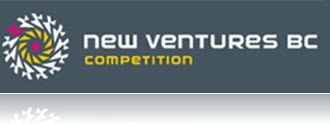I am still curious about startup incubators. Mostly because I think that they do a great job focusing attention and driving buzz around the startup activities in a community. ReadWriteWeb has a great summary of seed fund incubators, including:
I keep wondering why there isn’t an tech incubator in Toronto. We have a Fashion Incubator, a Food Business Incubator, a Research Centre with Advisory Services for entrepreneurs, 2 great universities with business and engineering schools located downtown with active student entrepreneurship groups: Rotman New Ventures Group and StartMeUpRyerson, entrepreneur focused events like StartupEmpire, Founders & Funders, Dicovery09, TiEQuest, Impact Conference and a few active seed investors (Scott Pelton and Roger Chabra at GrowthWorks, Rick Segal at JLA Ventures/Blackberry Fund, Derek Smyth at Edgestone).
Maybe we don’t need an incubator. But LaunchBox and DreamIt have been successful in building the local communities in Washington, DC and Philadelphia respectively. And there are local entrepreneurs heading to Y Combinator, there is a need and a desire for the benefits these programs bring for the entrepreneurs and the community.
All of these programs provide:
- A cohort
- Mentorship & Networking
- Training
- Funding
- Timelines
- Attention
I wonder if the best Toronto specific program would include a distributed community approach to access the available resources. There is a strong community and a strong series of events that could facilitate a similar program locally. The community of entrepreneurs can find a way to build a similar program informally using many of the existing events and activities.
A Cohort
This is easy enough to define, however, potentially difficult to recreate in a distributed manner.
Y Combinator, LaunchBox, TechStars, Capital Factory all use an application process and timelines to define a cohort of companies. The number of companies is defined by the amount of available resources:
- Available funding
- Mentor availability
- Training spots
The process should be easy to replicate from the above mentioned incubators. Plus all applicants must present their idea using Ignite format or a demo at a DemoCamp style event. The goal would be to help identify the best prospects, create excitement to find potential funding or at least to fine them the appropriate first mentors.
Having a shared space helps to begin to build shared experiences. Like grad school, where everyone shares the triumphs and challenges because of the close proximity. It’s not dependent to have a shared office space, but common meetings, shared mailing lists, badges of honour, and shared timelines can help entrepreneurs feel part of something that is bigger. As the program evolves it becomes a shared pedigree, much like an alumni program. You can see this developing from the Y Combinator cohorts, i.e., YC Summer 08, TechStars 08 etc.
Mentorship and Networking
There are a great number of individuals engaged in the community with varying levels of success and experience. Many of these folks would make great mentors, they just need to be asked and engaged. Here is my list of folks that need to be involved (in no particular order):
There are mentors in Toronto. It’s just a matter of finding the right people based on the company and problem space. The question is how to compensate a m
entor/advisor will need to be addressed at some point. But I think that at this early stage, most mentors should be doing this to help young entrepreneurs. Compensation is something that each of the new school incubators solves with their funding equation. Not always possible during these early stages, most mentors can look to programs like TiE or CYBF which are volunteer driven programs. The goal should be to provide time-limited direction and guidance based on domain expertise. The CYBF program requires that mentors meet with a startup for “ a minimum of 4 hours per month”. This is one lunch a week. It also limits the number of startups that each mentor should engage with.
Training
A program should take advantage of the existing training opportunities and create a few new opportunities.
The active programs that happen in Toronto include:
- MaRS Entrepreneurship 101 – an approximately 32 week program that runs October to May. Best part all of the previous training videos available on Vimeo.
- MeshU – business, management, technology and design for entrepreneurs. Some good stuff.
- StartupEmpire – happened last year, we’ll try to make it happen again
- Founders Lunch – run by John & Gosia at LearnHub. Great way for entrepreneurs to connect with each other. No funders or others around.
- Founders & Funders – a monthly opportunity to connect with other founders and the people that fund companies. This will include invitees from Toronto, Montreal, Waterloo, Vancouver, Boston and Silicon Valley.
- Refresh Events – interesting mix of technology, marketing, entrepreneurship and design training lectures at the Centre for Social Innovation
- This training coupled with a weekly dinner program with a guest speaker from the local community. The weekly dinners will serve as a coming together point for the cohort, but also as a great introduction to the cohort. There is the question of cost. But obviously it might be limited by the resources and the size of the cohort. There will be lots of pho, dim sum, and pizza.
Funding
Every time I try to run the numbers it doesn’t make any sense to run this as a fund. The fund is too small to operate on the fees and the carry. And unfortunately, I don’t know a single individual that is willing to use $10M and try this as an investment thesis. Or a group of angels that need this for dealflow and risk reduction. There are some funds (GrowthWorks, JLA/BlackBerry Fund, ExtremeVP, iNovia Capital, TechCapital) that are doing seed stage funding in Canada. It is extremely difficult to run an early-stage fund of this nature and make the numbers work for operations and to compensate a staff to run it.
There is an opportunity to create a Farm Team Fund (FTF) that assume a zero IRR and start funding these early stage entrepreneurs. The funding is a big challenge. We need to make sure both the extremely early capital and the follow on capital is available to help these companies sustain until profitability.
Timelines
- Capital Factory = 10 weeks
- TechStars = 12 weeks (May to August)
- Y Combinator = ~12 weeks (June – August)
- Seedcamp = 1 week + 12 weeks
- LaunchBox = ~12 weeks (May 18 – Aug 5)
Looks like 3 months is the magic number. That makes the 32 week program (October to May) for MaRS Entrepreneurship 101 program too long. The program needs to be focused on generating successful companies and entrepreneurs quickly.
Attention
What are the premier potential events in Toronto? DemoCamp? Mesh? OCE Discovery? Are any of these events equivalent of Demo or TechCruch50 or Y Combinator Demo Days? What is the event that attracts press, later stage investors, potential acquirers to find out about these companies? How do we highlight the great startups that are happening?
This is the one thing missing from the local ecosystem. A killer launch event. Currently if you want real attention, you are probably launching at a US event. In Vancouver, there is LaunchParty which turns out is cofounded by the team running BootupLabs which were part of the BarCampVancouver, DemoCampVancouver and NorthernVoice teams. It’s one moDemoCampToronto is a good starting point, however, it was designed as a monthly gathering for the local entrepreneurial technologists and designers to share what they are working on. It is a good local event for driving attention, attracting and hiring talent and getting that first sanity check.
What’s next?
It’s possible for local entrepreneurs to replicate many of the features of the new school venture creation programs. The funding challenges related to a zero IRR can make this a challenge, but Rick and others have stepped up to the plate to bring attention to bear and hopefully solve this for early-stage entrepreneurs. It would be a lot easier to start with an application and funding process, the $6,000-$30,000/founder isn’t a lot of money, but it does help pay the rent and food bill during the 12 week dash.
Are there a group of young entrepreneurs that want a program? Are you looking for a 12 week startup program in Toronto?
 Is a company that is built to exit the same as a company that is built to flip? Not in my opinion. Understanding how to build a company that is attractive to a potential acquirer can help entrepreneurs understand how to build product suites, acquire customers and pick technologies.
Is a company that is built to exit the same as a company that is built to flip? Not in my opinion. Understanding how to build a company that is attractive to a potential acquirer can help entrepreneurs understand how to build product suites, acquire customers and pick technologies.




